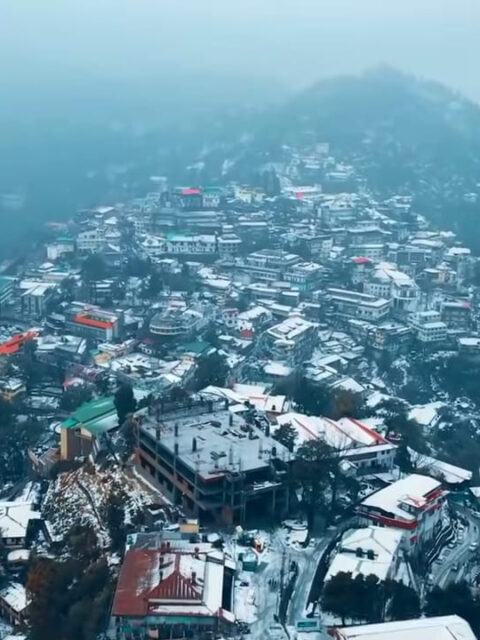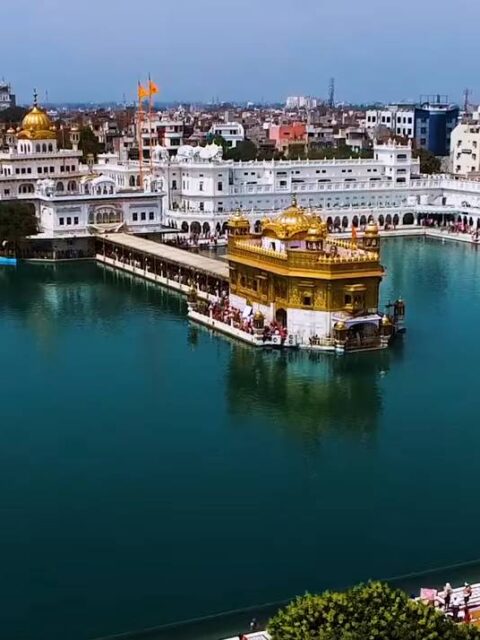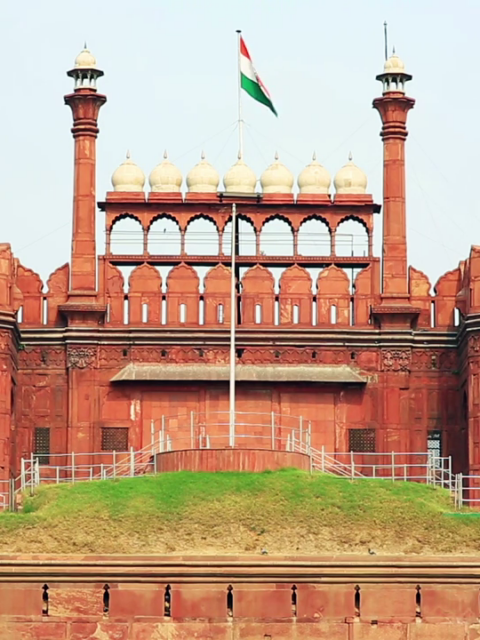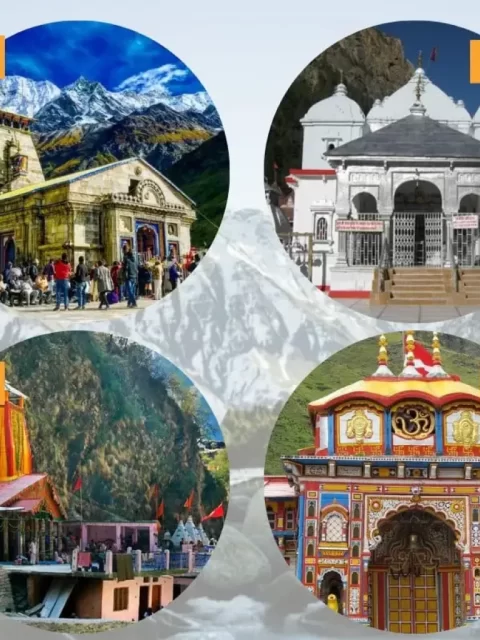Ramman Festival Uttarakhand World Heritage Since 2009
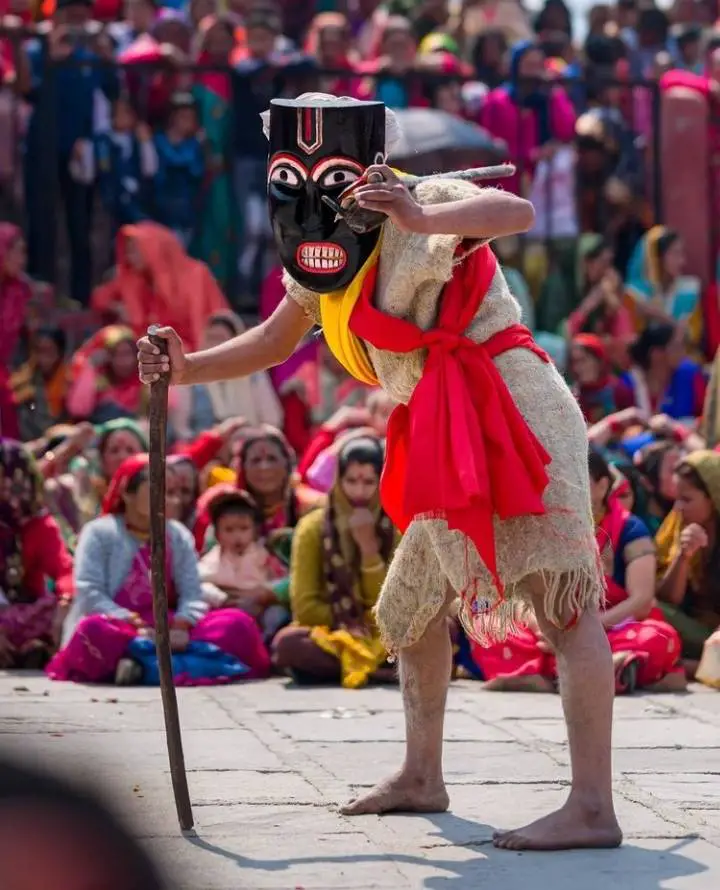
About Ramman Festival
The Ramman festival is a 500-year-old culture of Salud village located in Joshimath block of Chamoli district of Uttarakhand state of India. specility of Ramman Festival is Ramayana is staged in masked style to the rhythm of songs, dhol and rhythm without a single dialogues.
The Ramman festival has been declared a World Heritage Site by UNESCO on 2 October 2009.
History of Ramman Festival
Uttarakhand is being mentioned since the Vedic period, so even today hundreds of genres of Ramayana-Mahabharata period are present in Uttarakhand, out of which many genres have become extinct and many genres have reached the verge of extinction,
but many people Through his tireless efforts and determination, he has done unprecedented work for the protection and development of many disciplines. And Uttarakhand has got its own identity on the whole world stage.
Whether it is the world’s longest hiking Nanda Rajajat Yatra or the famous Bagwal war at Devidhura in Champawat, all this is being passed down from generation to generation,which brings us to the folk culture of Uttarakhand. Along with this, we also try to keep the cultural heritage alive for years. One such folk culture is Ramman Festival.
Ramman Festival Photos

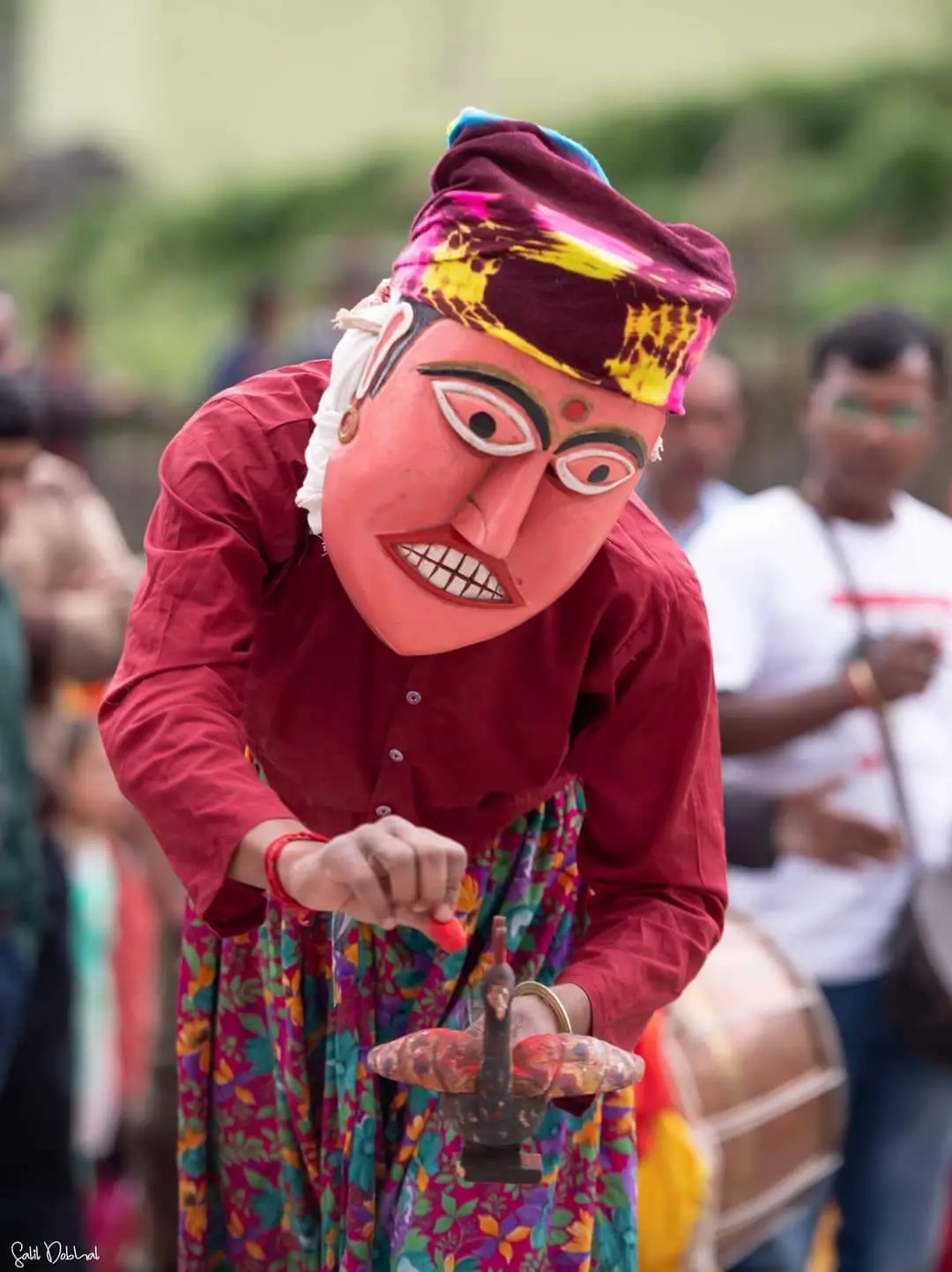
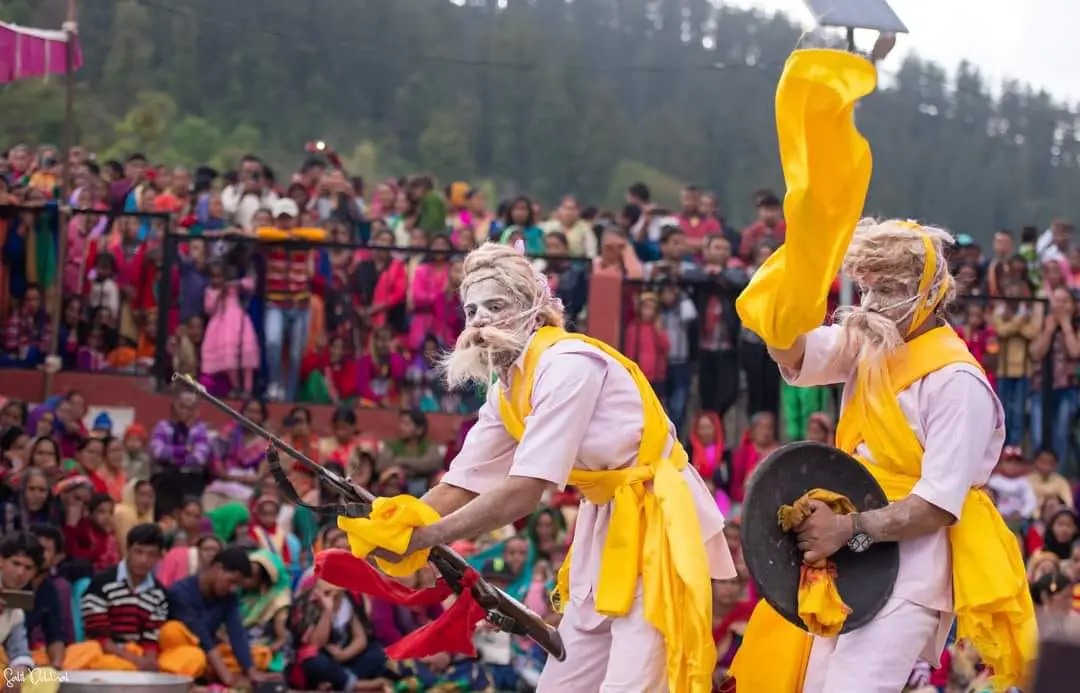
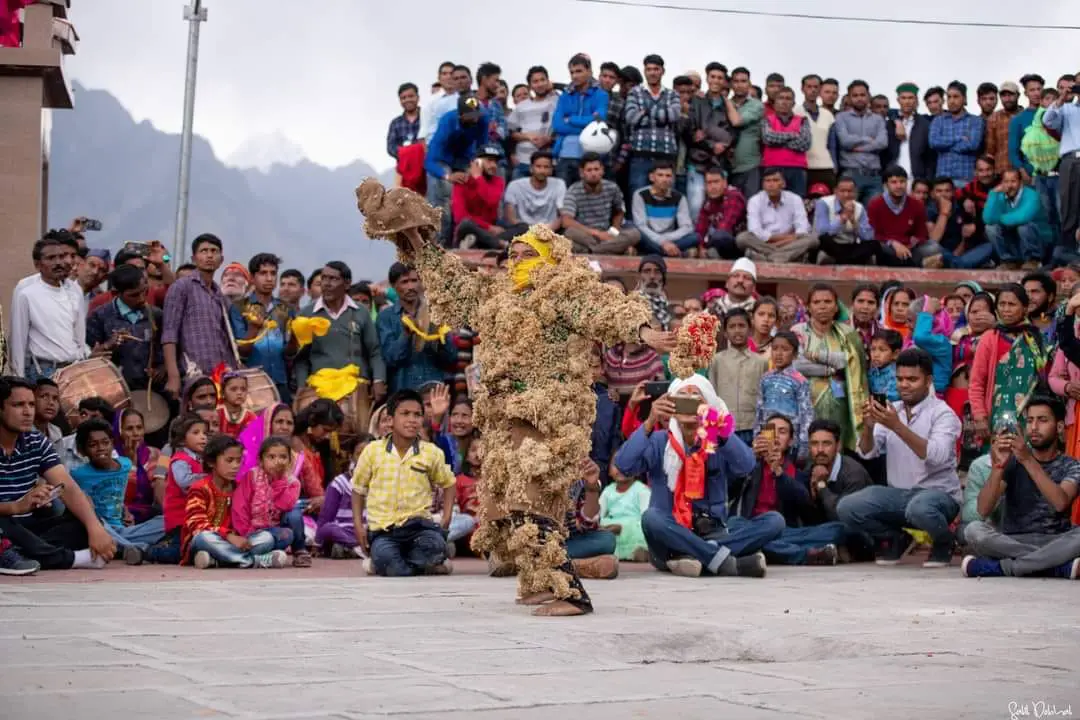
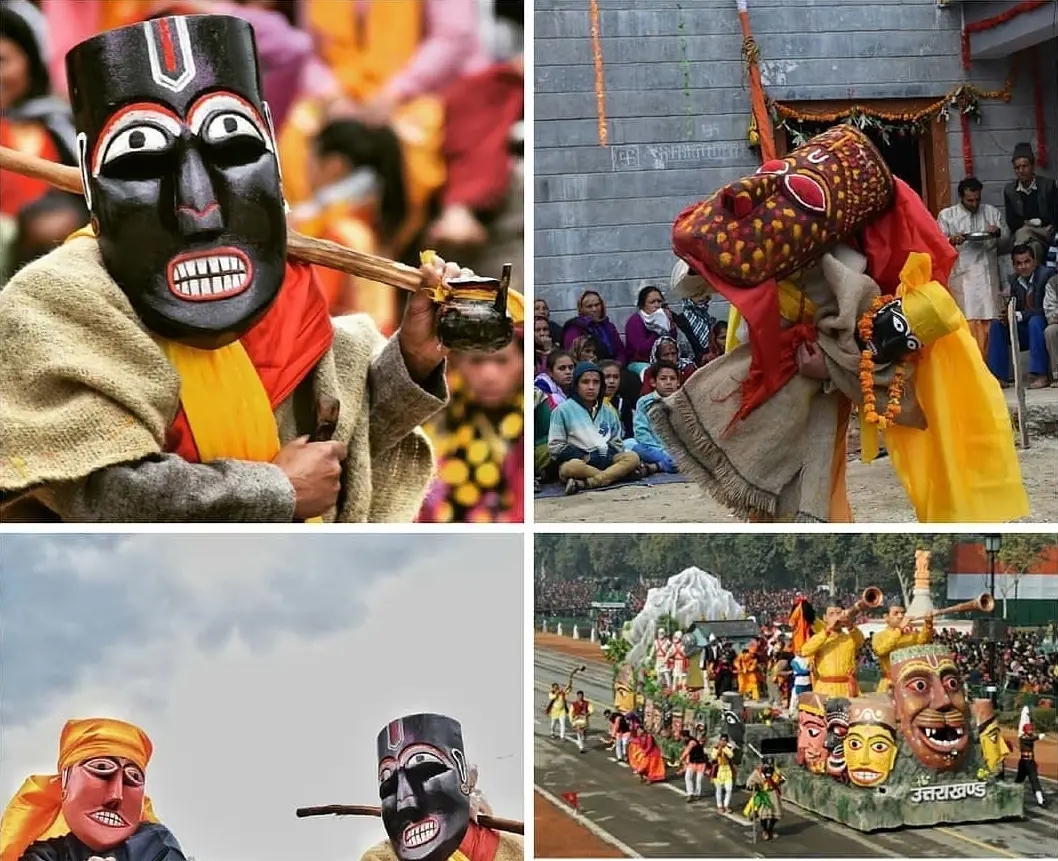
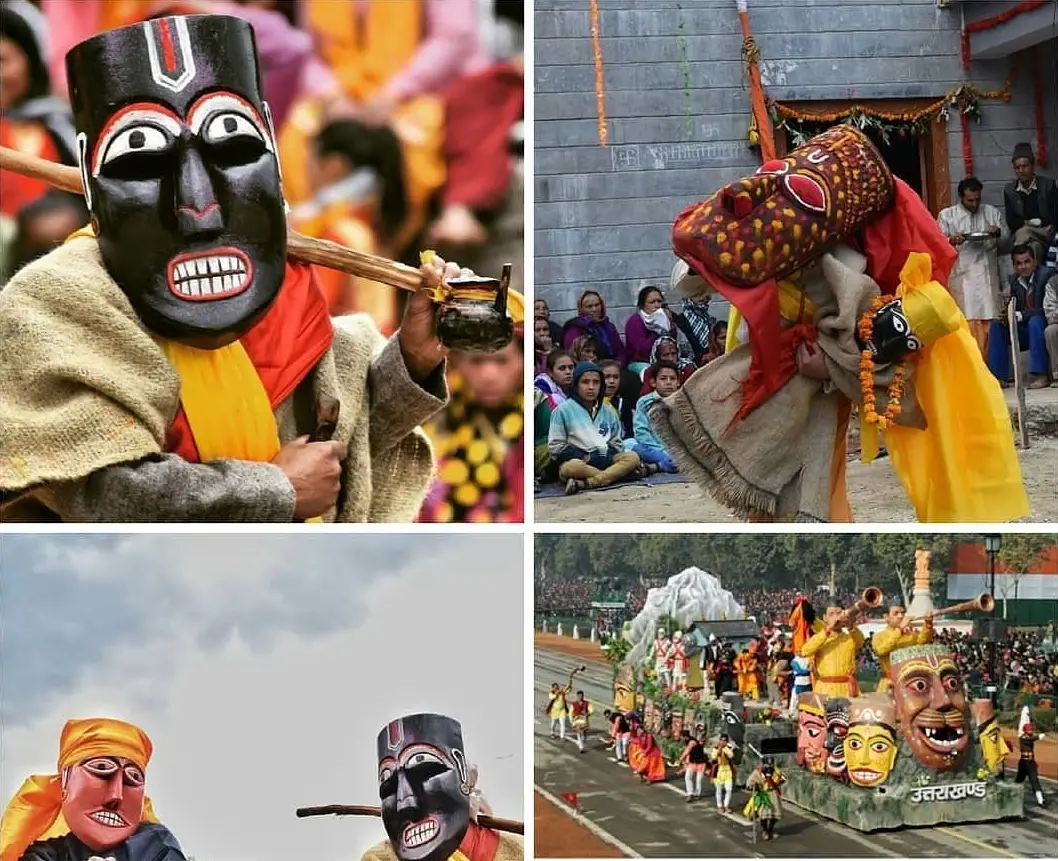
What is Ramman Festival
Ramman festival is held every year in April in Salud village of Chamoli district of Uttarakhand. Apart from this village, Ramman is also organized in Dungri, Baroshi, Selang villages.
In this, Raman of Salud village is more popular. It is organized by the joint panchayat of Salud-Dungra. Raman Mela is celebrated for 11 days and sometimes for 13 days.
It is a series of diverse programs, pujas and rituals. Various colorful events like mass worship, Dev Yatra, folk drama, dance, singing, fair etc. take place in this.
Traditional worship-rituals and entertainment programs are also organized in this. It is also an occasion for the annual worship of the Bhumyal deity and also a chance to meet the families and the deities of the village-area.
Origin of Name Ramman
On the last day some selected episodes of Ramayana are presented in folk style. Due to the presentation of these episodes of Ramayana, this entire event is known as Ramman. In between these episodes, mythological, historical and mythological characters and events are presented through mask dance style.
Ramman Festival Dance Forms
The dance form used in the Ramman festival is the masked dance form. In this, the dancer wears a mask in his mouth, then performs choreography. There is no dialogue between the characters in this. In the entire Ramayana, expressions of emotion are given through 18 masks, 18 locks, a dozen pairs of dhol-damau and eight bhankors, besides jhanjhars and majirs.
There are two forms of masks.
First- Dyo Pattar means masks of the deities.
Second- Khaylyari Pattar means masks of entertainment.
Dance Froms
Badya-Badyan: This dance is based on the merchants of Tibet, in which the details of the theft and robbery on them are presented through dance.
Mayor-Murain: This dance depicts the daily troubles faced by the hills such as:- Attacks by wild animals while going to the mountains to cut wood and grass.
Maal-Malla: This dance describes the war between the local people and the Gorkhas.
Kuru-Jogi: It is a type of comedy dance, in this the comic character of Raman, who goes among the people by applying a special type of grass (Kuru) sticking to his whole body. People run here and there for fear of Kuru sticking, but Kuru Jogi takes out the Kuru sticking to his body and throws them at them. In common language, it can be called a joker, which works to make people laugh and entertain.
How Ramman Festival Become World Heritage
The Ramman Festival was confined to Salud till the year 2007. But it was the result of the hard work of Dr. Kushal Singh Bhandari, the teacher of the village, that today Ramman has got a place in the World Heritage.
Dr. Bhandari scripted the Raman and translated it into English. After that it was taken to the Indira Gandhi National Center for the Arts in Delhi in the year 2008 with the help of Garhwal University Public Art
Performance Center.
The institution liked the specialty of Raman so much that the entire team of Kala Kendra reached Salud-Dungra and they were so overwhelmed by the event that a team of 40 people was called to Delhi. This team also gave their splendid performances in Delhi. Later it was sent to UNESCO by the Government of India.
On 2 October 2009, UNESCO declared Ramana in Pankhanda as a World Heritage Site and handed over certificates to the villagers.
The credit of this success goes to Professor Dataram Purohit of Garhwal University, renowned cinematographer Arvind Mudgil, Raman Lokjagar singer Than Singh Negi and Dr. Kushal Singh Bhandari. The auspicious time of Raman, which is held every year, is taken out on Baisakhi.
In collaboration with UNESCO and the Department of Culture, a huge museum is being prepared in the village for the mythological and traditional masks associated with Raman. Other mythological objects related to Raman will also be stored in this museum.

